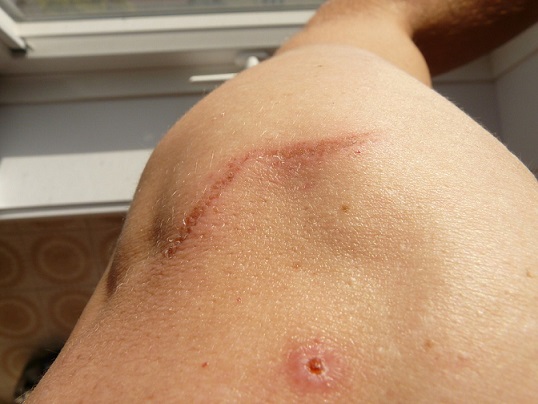Your rotator cuff is the muscles that keep the shoulder anchored inside the socket. These muscles are attached to the tendons that cover the head of your humerus. These muscles are very flexible and allow your arm to move up and down and rotate front to back.
You have a bursa sac that contains fluids and cushions the area between the rotator cuff and the muscles that connect them. It helps everything to move with ease as the arm is bent or rotated. If you injure your shoulder, you may develop bursitis of this bursa sac. A bad enough shoulder injury will cause the rotator cuff to tear and/or become damaged. In this case, surgical repair may be needed.

When Is Rotator Cuff Surgery Required?
When you injure your rotator cuff, surgery is usually a last resort. A severe tear may be repaired right away, but minor tears may benefit from non-surgical treatments. It depends on the type of tear. If the tendons tear, there is nothing attaching the head of the humerus or top of the arm to the shoulder. These need urgent repair. Most minor rotator cuff injuries are just a mild fraying of the muscle fibers. However, this can progress to a full blown tear.
Any type of rotator cuff tear needs rest and healing. If you continue to use your arm and shoulder while healing, you may worsen the damage and increase the need for surgical repair. If you are suffering from severe and chronic shoulder pain, you should see an orthopedic doctor for the earliest treatment possible.
In most cases, your doctor will recommend physical therapy and home treatments before recommending surgery. Surgery is usually indicated if:
- Your rotator cuff tear is severe and the injury was recent
- A tear that is over 3 cm
- Your arm and shoulder is too weak to use
- You have had symptoms over 6 to 12 months and nonsurgical treatments fail
If the above conditions are met, the doctor will need to do surgery to place the muscles and tendons back on the top of your arm and shoulder.
How Is It Done?
Rotator cuff surgery is done to repair tears. It may be as simple as cutting away loose fibers and tissue so that new tissue can grow. A more severe tear may require all the tissue to be repaired and reattached to the top of the arm. The types of surgery are:
- Mini Open Repair - The doctor makes a small incision that is only about 3 to 5 cm in length. They use an arthroscope to go in and look at the damaged tissue and joint area. They can remove any damaged bone and repair the cuff. The last part of this surgery the doctor uses the “open repair” method and looks right at the shoulder tissue.
- Open Repair - The doctor opens up the shoulder area with a full incision to view the shoulder joint and the cuff. This is usually used for major tears and damage. The shoulder is detached from the tendons and muscles and any tears are repaired. The shoulder is put back into place and the tendons reattached.
- All-Arthroscopic Repair - This surgery is done inside a small incision and the arthroscope is put into the shoulder area. The doctor can view the entire procedure on a video monitor and assess the area that needs repaired. Any instruments used in surgery can be passed through the scope. The incision is small and the healing time is less than an open repair.
What to Expect after Rotator Cuff Surgery?
The recovery process differs for each person and each type of surgery. Arthroscopic surgeries are usually an easier recovery than open surgeries. No matter which surgery you have, the outcomes are usually similar. Here is what to expect after a rotator cuff repair:
- Pain (Mild to Moderate) - There will be some pain immediately after surgery. Care will be taken to make sure that you experience as little pain as possible. Your doctor will prescribe you pain medications and nurses will teach you helpful techniques to relieve pain in between medication doses. You will most likely receive anti-inflammatory medications and a small amount of narcotic pain medications.
- Immobilization - The first 4 to 6 weeks after surgery, you will have limited use of your arm. Your doctor will discourage heavy lifting or over extending the arm in any direction. This will allow the repairs to heal properly.
- Physical Therapy - Beginning in the first weeks, you will be sent to physical therapy to help heal the repair and build strength in your shoulder and arm. The therapist will teach you safe exercises and movements to do at home.
- Healing Time - Healing could take up to 4 to 6 months after surgery, so take things slow. There are some risks and complications like bleeding, infection, extended recovery time, severe pain, and time off work. These complications can be prevented by following doctor’s orders, getting early treatment after an injury, and taking care of your health prior to surgery.
The final outcome of rotator cuff surgery is usually very positive. Most people that have this repair done say the shoulder is much better and pain is much less. Regardless of the type of shoulder surgery you have, the results are usually similar for each. The most important factors for a good recovery include:
- A surgeon with experience in this type of surgery
- Good tissue to work with
- Compliance with treatment plans
- The size of the tear
- Your age and health
- The amount of time between injury and treatment